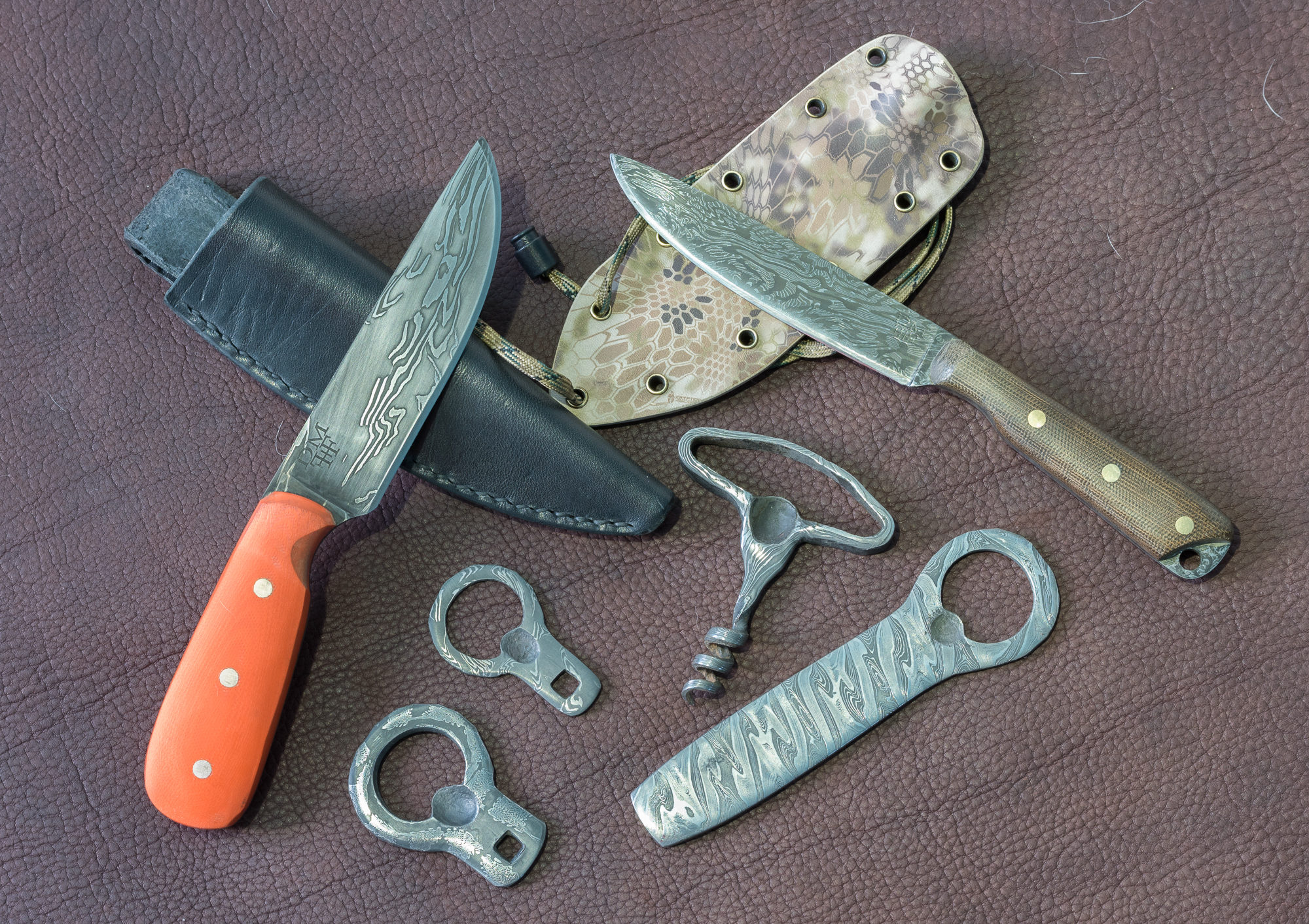
If you keep your carbon steel clean/dry/oiled or build up a nice patina on it, you won’t have any issues with rust. But… if you do get surface rust or minor pitting, it’s pretty simple to clean up and may leave a bit of character to the steel (the residual pitting and tarnish left after cleaning up the rust, not the rust).
Cleaning rust/pitting
Unless it’s a relic that was buried for a while, most rust is just minor surface corrosion. For light surface rust a simple polish like Flitz may be enough to clean things up. But if there is pitting, then fine steel wool (000 or 0000) along with some WD-40 is a better approach and quickly cleans down to base metal. Steel wool will remove your patina too. Naval Jelly is another option, but if you think that’s the best route, then sending it in for spa treatment is likely a better idea (contact me about spa treatment.) Vinegar, lemon juice and other mild acids will also do the trick, but that’s not what I use so can’t recommend it.
Creating Patinas
Patinas are a surface layer that helps prevent rust – it’s a more rustic alternative than keeping a layer of oil, wax or polish on the steel. One of the simplest methods to force a patina on carbon steel is application of cheap yellow mustard. Clean the steel first with Dawn or equivalent and then apply a thin layer of mustard and let it sit for a while, 10-20 min is my starting point before rinsing/wiping clean, DRYING, and applying another coating. I try to avoid putting mustard on the edge and after applying wipe the edge clean. You can also mask areas with nail polish if you want to create patterns or simply apply mustard to limited areas and/or apply a range of thicknesses of mustard. Forcing a patina like this (mustard) works both on carbon steel and carbon steel damascus. Basically you repeat the cycle until you reach the desired patina, and then coat at least the edge with oil. Note: I just rinse/wipe off the mustard with water (no soap) between applications, I only clean initially before starting the process. Patinas will change over time with use, but this is the traditional way of prevention corrosion on carbon steel that has worked for
If you decide to go the patina route over regular use of oil/wax/polish, then I’d encourage experimenting with it on a simple mono-steel (non-damascus) blade first to get the hang of it, getting a feel for how thick of a coating to use. I don’t generally force patinas on damascus steel with mustard – usually they just develop over time with kitchen knives or knives used for eating/food prep. It’s more common to force a patina on something that could use some corrosion resistance but wouldn’t patina during normal use (e.g. woodworking blades.)
Here’s my personal leather knife as an example. I left the logo side free of mustard as a reference and then applied expired French’s Yellow Mustard for 10 minutes at a time in thin coatings (thin enough I could still see most of the metal). Here’s the results:






And here’s similar treatment on a 1095 blade – 4 rounds and only oiled the edge:




Next up, which will “probably” next week – either sharpening or (re-)etching damascus.
